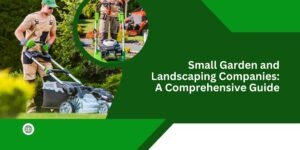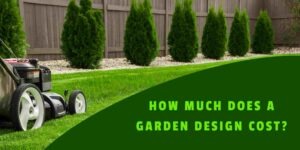In a desert city like Abu Dhabi, starting a huge garden could seem like a difficult task, but with the correct preparation, tactics, and understanding of climate-smart methods, it can turn out to be one of the most rewarding endeavors you’ve ever undertaken. In this in-depth, we’ll walk you through how to start a large garden that not only survives the heat but thrives beautifully in Abu Dhabi’s unique environment.
This guide is intended for both novice and expert gardeners who want to grow into larger areas, whether it’s a rooftop makeover, a community garden, or a large villa backyard. It covers everything from soil preparation to irrigation systems, from plant selection to design aesthetics.
A. The Vision Behind a Large Garden: Purpose & Planning
Before planting a single seed, you need a vision. Ask yourself:
- What is the goal of your garden? (Aesthetic, food production, relaxation?)
- How much time can you dedicate weekly?
- Will you need help managing it?
- Do you want native or exotic plants—or both?
Create a written garden plan, including sketches or diagrams to visualize pathways, beds, sitting areas, water sources, and shade structures.
B. Understanding Abu Dhabi’s Environment
Climate Characteristics:
- Intense sun (often over 45°C in summer)
- Low annual rainfall
- High humidity in coastal areas
- Sandy or saline soil
Implications for Gardening:
- High need for mulching and water-retaining soil amendments
- Need for heat- and drought-tolerant plants
- Shading, smart irrigation, and pest control are crucial
C. Site Assessment & Layout Design
1. Measuring and Zoning Your Space
- Measure the total area and map it digitally or on graph paper
- Divide into zones: vegetable plots, flower beds, trees, walkways, seating, compost
2. Sun and Shade Mapping
- Observe light movement for several days
- Use tall plants, pergolas, or trellises to create microclimates
3. Wind Flow & Protection
- Install barriers using trees, hedges, or wooden fencing
D. Soil Preparation: Turning Sand into Fertile Ground
Abu Dhabi’s native soil is sandy and nutrient-poor. To start a large garden:
1. Soil Testing
- Test pH, texture, and salt levels
- Determine organic matter and nutrient deficiencies
2. Soil Amendment Techniques
- Mix organic compost, cocopeat, and well-rotted manure
- Add clay and mulch to improve water retention
- Gypsum for salt-affected soils
E. Designing the Garden Layout (Functional + Aesthetic)
1. Raised Beds vs. In-Ground Planting
- Raised beds offer better drainage and soil control
2. Paths and Access Points
- Design wide enough walkways for tools, wheelbarrows
- Use gravel, stone, or recycled tiles
3. Seating & Shade
- Wooden benches under pergolas
- Gazebo for outdoor gatherings
F. Watering Systems: Sustainability First
In a water-scarce region, irrigation is key.
1. Drip Irrigation Systems
- Minimize waste, ideal for vegetables and shrubs
2. Soaker Hoses & Timers
- Automate watering based on weather
3. Greywater Recycling
- Reuse kitchen or shower water after filtration
4. Smart Monitoring Systems
- Use moisture sensors linked to mobile apps
G. Selecting the Right Plants: Large-Scale Strategy
1. Native & Adapted Plants
- Ghaf tree, acacia, date palms, oleander
2. Edible Plants that Work
- Tomatoes, peppers, eggplants, okra, herbs (mint, basil)
3. Seasonal Flowering Plants
- Marigolds, petunias, zinnias, vinca
4. Vertical & Trellised Plants
- Cucumbers, beans, grapevines
H. Creating Microclimates & Layering
1. Use of Canopy Trees
- Provide dappled shade to understory plants
2. Shrubs as Wind Buffers
- Slows evaporation, protects delicate plants
3. Ground Covers for Cooling
- Keep soil cooler, reduce water loss
I. Composting & Organic Fertilization
1. Building a Compost System
- Use garden waste, kitchen scraps
- Bin-based, pile, or tumbler method
2. Vermicomposting
- Red worms convert waste into rich soil
3. Natural Fertilizers
- Neem cake, bone meal, seaweed extract
J. Pest and Disease Management in Abu Dhabi
Common Pests
- Whiteflies, spider mites, mealybugs
Solutions
- Neem oil sprays
- Intercropping to deter pests
- Companion planting (e.g., basil near tomatoes)
Shade Netting & Row Covers
- Protect against sun and pests
K. Lighting, Décor & Comfort Elements
1. Garden Lighting
- Solar garden lights
- Lanterns for Arabic ambiance
2. Water Features
- Small pond, ceramic fountain, wall water feature
3. Seating & Hammocks
- In shaded corners or under trees
4. Outdoor Kitchen or BBQ Area
- For entertaining and dining
L. Budgeting and Material Sourcing in Abu Dhabi
Where to Buy
- ACE Hardware
- Lulu Garden Centre
- Dubai Garden Centre (delivery available)
Cost-Saving Tips
- Start small, expand gradually
- Reuse and repurpose materials
- Exchange seeds/plants with neighbors
M. Community Gardening & Education
1. Joining Community Gardens
- Check with local municipality or community centers
2. Educational Workshops
- UAE-based sustainability centers often offer gardening classes
N. Seasonal Garden Care
Spring
- Start seedlings, fertilize, prune
Summer
- Focus on mulching, reduce transplanting
Autumn
- Replant cool-weather vegetables
Winter
- Most productive time—plant greens, herbs, root veggies
O. Long-Term Garden Vision: Scaling & Sustainability
- Consider rooftop extensions
- Add aquaponics or hydroponic systems
- Grow fruit trees (with support)
- Involve children and schools
Final Thoughts
How to start a large garden in Abu Dhabi is no longer a mystery—it’s a manageable, even therapeutic endeavor if approached with the right knowledge, patience, and local adaptation. You’re creating a lifestyle based on sustainability, health, and beauty, not just producing plants.
Are you prepared to transform your sandy yard into a verdant haven? One plant, one walkway, one covered bench at a time, start your garden adventure.






